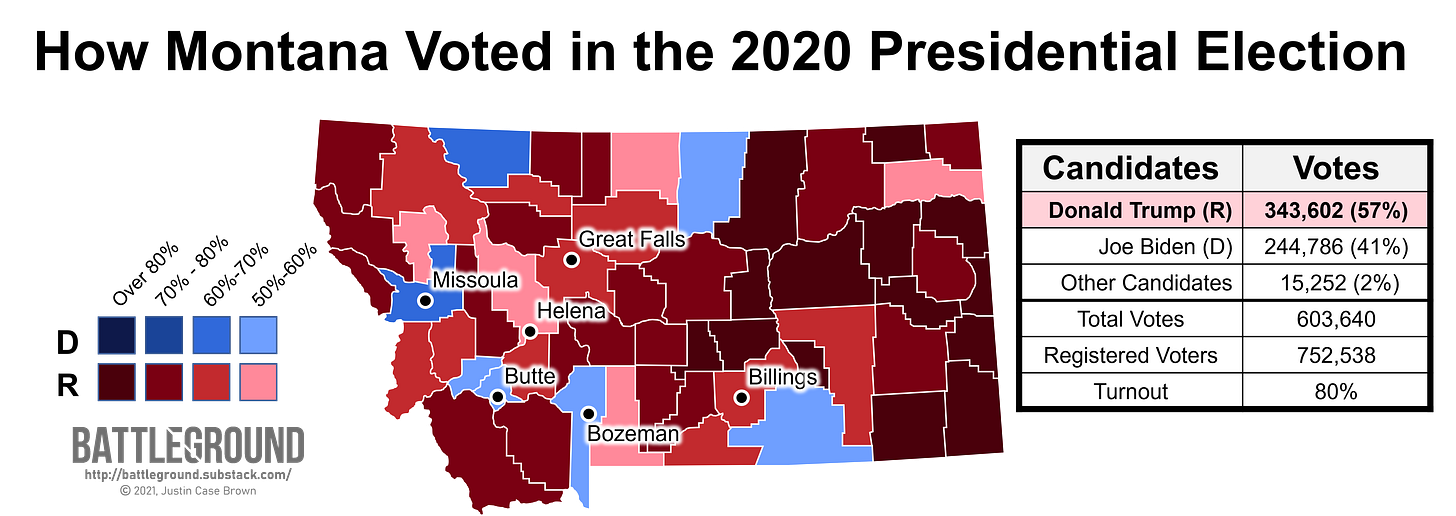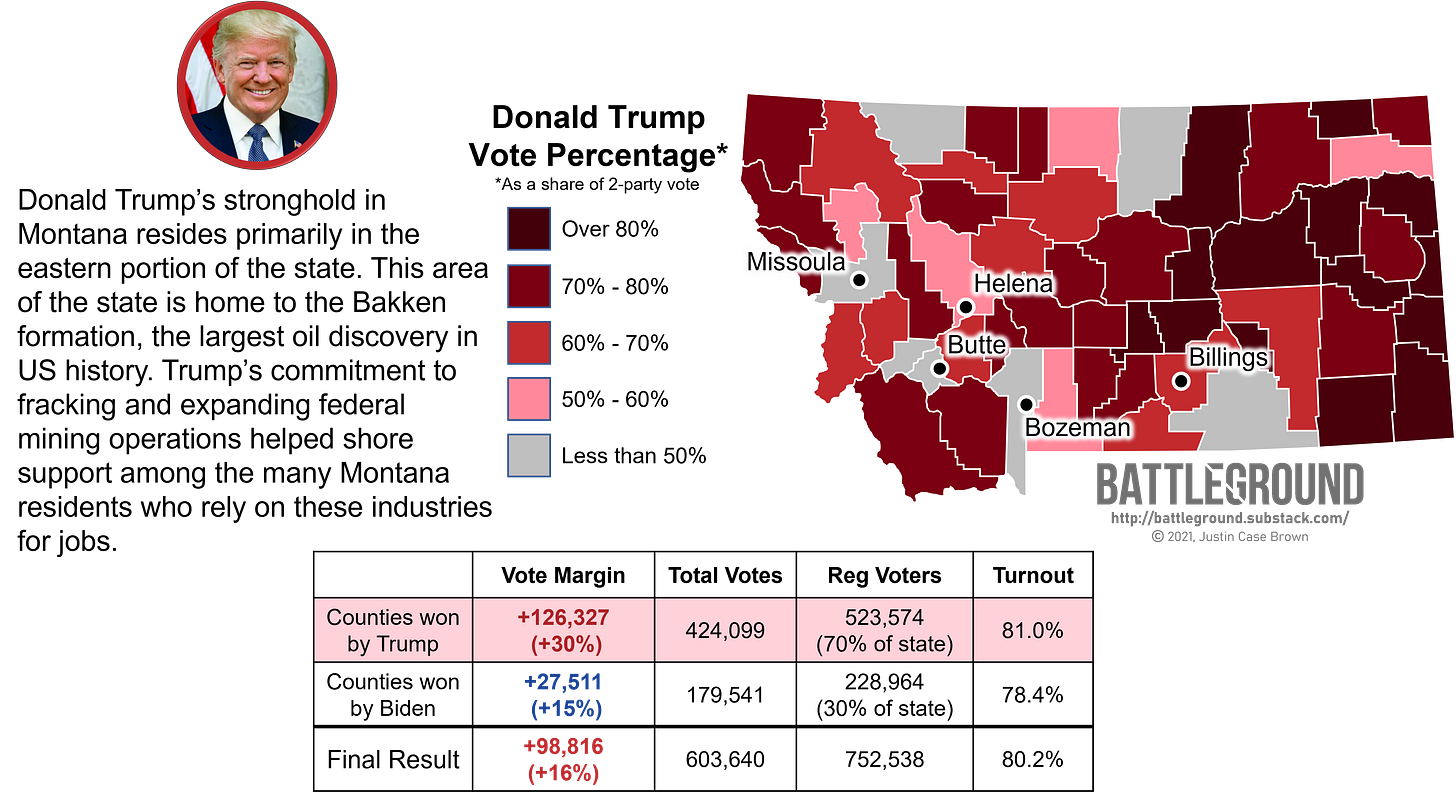Montana: Growing cities vs. Sparse prairies
See how one of the nation’s top 10 fastest growing states changes as its population changes.
Topline Takeaways
Donald Trump won Montana for a second time in 2020 but saw his winning margin drop by 4 points.
Joe Biden saw increased support for Democrats across the state, in part due to the absence of a popular third-party candidate. (Gary Johnson won 6% of the Montana vote in 2016.)
Montana is one of the nation’s top 10 fastest growing states and many of these new residents are settling into the state’s “blue” urban areas rather than the more sparsely populated “red” counties.
In-Depth Insights
While Montana is a fairly purple state, regularly voting to the left of neighboring states like Idaho, North Dakota and Wyoming, 2020 marks the first year since 2000 where Republicans have a trifecta in state government. Republicans have held majorities in both state houses for nearly a decade but won the governorship for the first time in 20 years. Donald Trump’s role in this “red wave” can be traced to his support for oil and mining industries. Montana holds a portion of the Bakken formation which has produced a local energy boom in Eastern Montana akin to what was seen in North Dakota. Trump’s commitment to expanding mining operations also plays well among the state’s voters as Montana is known as the only producer of platinum and palladium in the United States.
Democrats in Montana are buoyed by two separate, distinct constituencies. In the state’s rural areas, Native Americans are typically responsible for lifting Democrats to county-level wins. Three of the counties won by Joe Biden in 2020 have Native American majorities. (There are also two more counties with Native Americans majorities where Biden came within 10 points of beating Trump.)
The other segment of the Democratic constituency is the state’s growing urban population. The state’s five most populous counties all saw growth over the past decade: two went to Biden and the other three saw Trump’s winning margin decrease when compared to his 2016 performance. These urban counties also have lower turnout rates when compared to more rural counties won by Trump, signalling that there’s room for growth within Democratic strongholds.
Forecasting the Future: Montana’s patterns of urbanization will dictate its political future. While many of the state’s cities are growing and becoming increasingly Democratic, rural voters who are unhappy with recent changes are becoming more partisan and support Republican candidates more forcefully. Meanwhile, many of the counties that Trump won by his largest margins were also counties that saw the largest decreases in population over the past decade. This calculus may lead Montana to become more competitive for Democrats as these new urban voters make up an increasingly large proportion of state residents. However, this change will not happen overnight as the state’s demographics (with most residents being older and White) continue to favor the Republican party.





